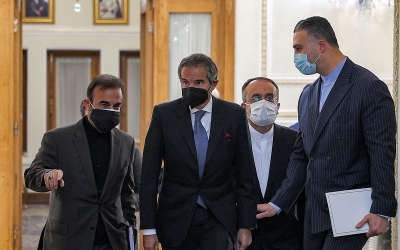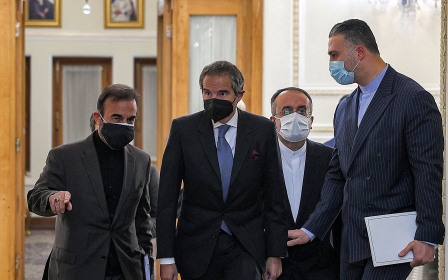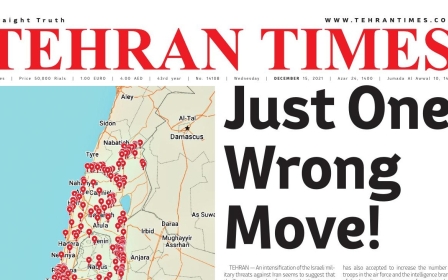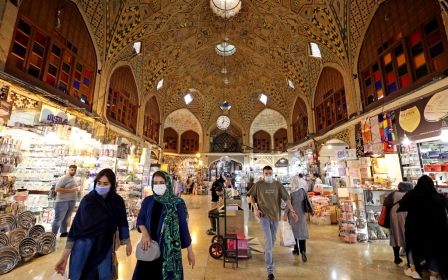Iranian press review: IRGC deploys rocket launcher speedboats in Strait of Hormuz
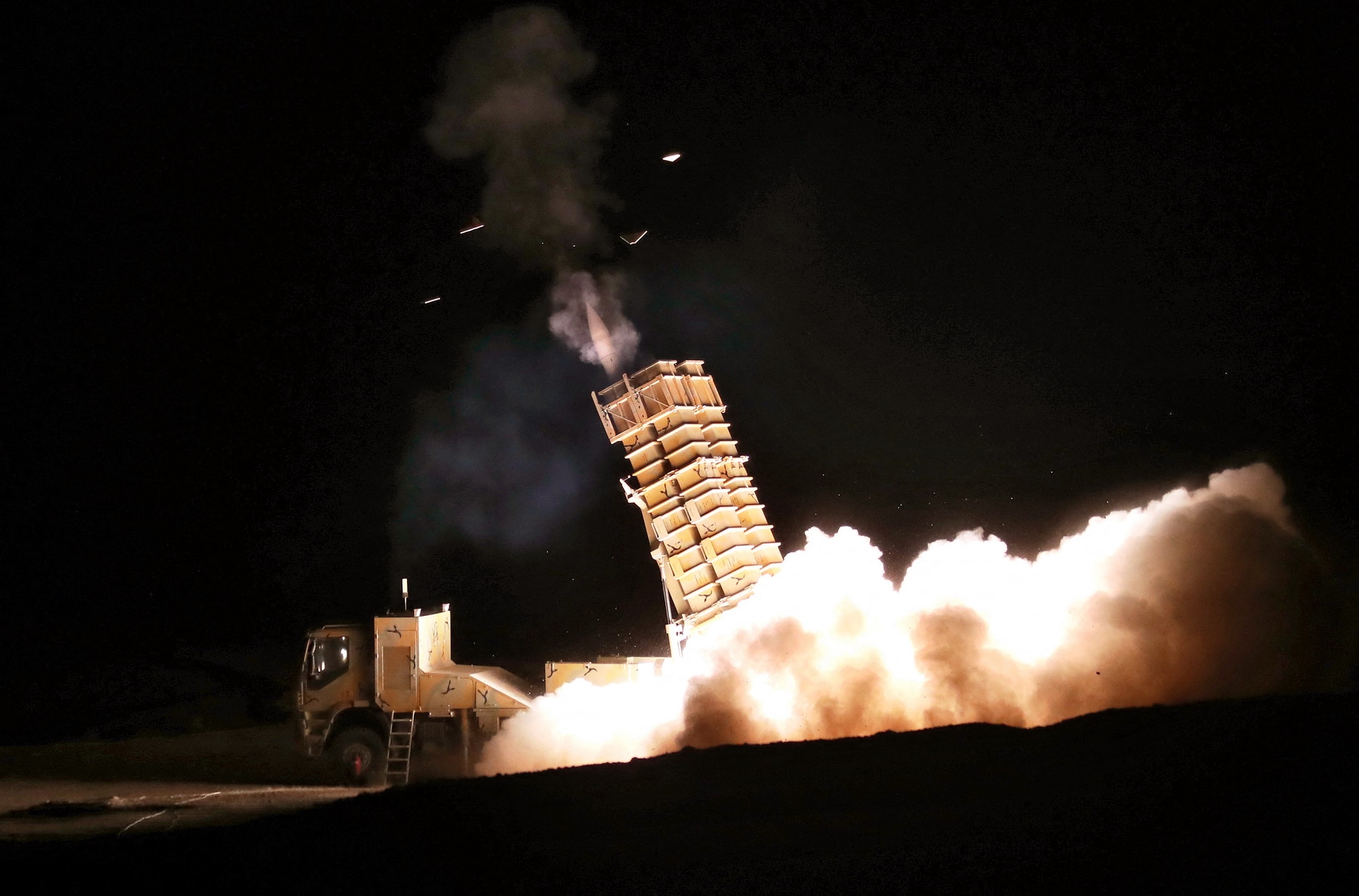
Iran increases military built-up amid rising tensions with US
Iran's Islamic Revolutionary Guard Corps (IRGC) deployed 110 speedboats equipped with rocket launchers to the navy of the country's elite force at the Strait of Hormuz, media close to the IRGC reported.
On Saturday, the IRGC-affiliated Fars news agency released video footage showing rows of double-engine speedboats stationed at a harbour in the Gulf.
The agency said that speedboats' rocket launchers have pinpoint accuracy, adding that stealth boats were also deployed at the strait to increase the IRGC's military power.
Meanwhile, the Kayhan daily reported that local manufacturers increased the IRGC's gunboats' speed to 200 km per hour. As a result, the highest speed for the IRGC's speedboats now is 167 km per hour.
Speedboats are the primary military means used by the IRGC for confrontation with US warships in the Gulf.
Iran changed its military strategy in its southern territorial waters after the US Navy destroyed Iran's warships during the Iran-Iraq war.
Instead of pursuing a conventional warfare strategy, the IRGC has developed its military power to apply asymmetrical warfare against the US military presence in the Gulf.
Since 2018, when Washington began its maximum pressure campaign against Tehran, the two arch-enemies have been in confrontations several times in the Gulf and the Strait of Hormuz.
Iran's Vienna team told to sign deal, say analysts
Analysts and former diplomats have suggested that Iran's negotiating team in the Vienna nuclear talks have been tasked with signing a deal by Tehran.
The political manoeuvres in Vienna and President Ebrahim Raisi's new economic policies showed that decision-makers in Tehran had ordered the team to make a deal with western powers.
Seyed Jalal Sadatian, Iran's former charge d'affaire in the UK, told the Arman daily: "It seems that from inside Iran an order was sent to the negotiating team in Vienna to reach an agreement."
The veteran diplomat said that the power centres that determine Iran's nuclear talks stance had realised that "reaching a deal would become more challenging if they don't make a deal [in this round of talks]".
After a six-month pause in negotiations over a potential return by the US and Iran to the 2015 agreement, on 29 November the talks resumed in Vienna, with a new delegation attending the talks from Iran.
Despite strict demands set out by Iran's new negotiating team, Iranian analysts hinted that Tehran's delegation would step back from its demands.
"In the next year's budget bill, one US dollar is considered equal to 230,000 [Iranian] rials, the price which would be possible only if the nuclear deal is revived," Abbas Abdi, a prominent analyst, wrote in an opinion piece.
One US dollar is now about 290,000 rials on the open market.
"This shows that the budget planners and the government are relatively sure that the issues related to the nuclear negotiations would be solved," he added.
Surprises in Raisi's first budget bill
On Sunday, President Raisi's administration submitted a budget bill to the Iranian parliament for next year's national budget. The bill, dubbed "the most contractionary budget of the past two decades", had chapters that raised eyebrows among economists.
A 14-fold increase in taxes for Iranians travelling abroad was the boldest surprise in the budget bill. According to the bill, in the next fiscal year (beginning on 21 March), Iranians travelling abroad must pay a 52m Iranian rials exit tax (about $179 on the open market).
The current year's exit tax for Iranians' is 4m rials for the first trip aboard, 6m rials for the second, and 8m rials for the third or more journeys abroad.
The sharp increase proposed in the new budget bill provoked mockery from Iranians on social media.
"Leaving Iran with human traffickers would be cheaper than legal travel and sometimes even safer," Pouria Mahrouyan, a veteran journalist, wrote on Twitter, referring to the downing of a Ukrainian jet by the IRGC in 2020.
According to the Sharq daily, another surprising matter in the budget bill was a 15 percent increase in the presidential office budget, despite a decrease in the funding for most other governmental offices.
Meanwhile, experts criticized the Raisi administration's decision to increase the retirement age from 60 to 62, arguing that the plan would cause more unemployment in the country.
About 11,000 people fall below poverty line every day
The number of people living below the extreme poverty line increased at a daily rate of about 11,000, much higher than economists predicted.
According to an analysis published by the Ettemad daily, in 2019 about 26 million Iranians lived below the extreme poverty line. The number increased to 30 million one year later, according to data published by the Ministry of Cooperatives, Labour, and Social Welfare.
"The number says that four million persons have become extremely poor in one year, which means 333,000 new poor every month," wrote the daily.
Since 2018, Iran's income from oil export has dramatically declined due to the US embargo. In addition, systemic corruption, dilapidated infrastructure, and the pandemic have worsened Iran's economic crisis.
The crisis has hit the working class harder as the ILNA news agency reported that "since 1980, Iranian workers have lost over 58 percent of their purchasing power".
According to the agency, Iranians earning hourly wages below $1 are among the lowest-paid workers in the world
*Iranian press review is a digest of news reports not independently verified as accurate by Middle East Eye
Middle East Eye propose une couverture et une analyse indépendantes et incomparables du Moyen-Orient, de l’Afrique du Nord et d’autres régions du monde. Pour en savoir plus sur la reprise de ce contenu et les frais qui s’appliquent, veuillez remplir ce formulaire [en anglais]. Pour en savoir plus sur MEE, cliquez ici [en anglais].


